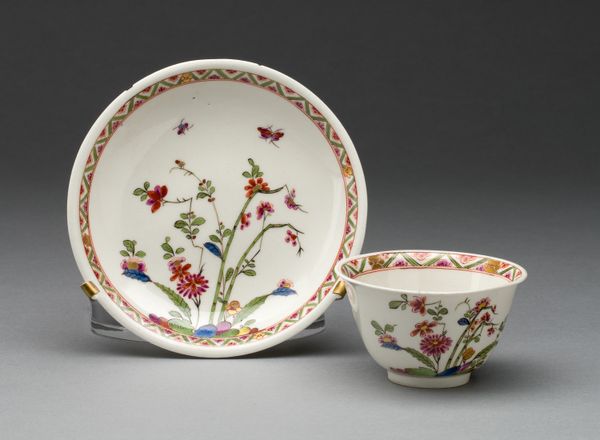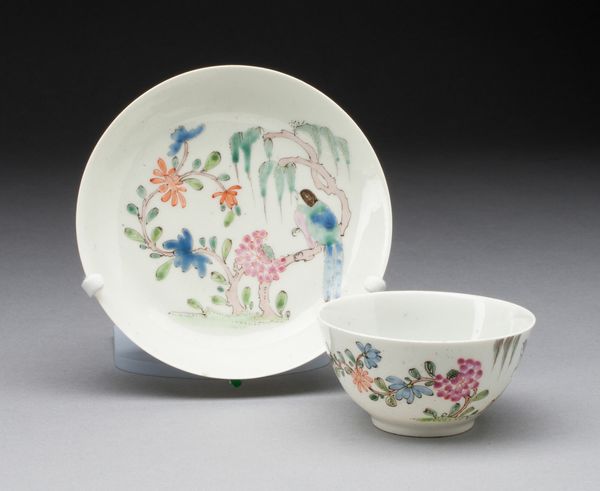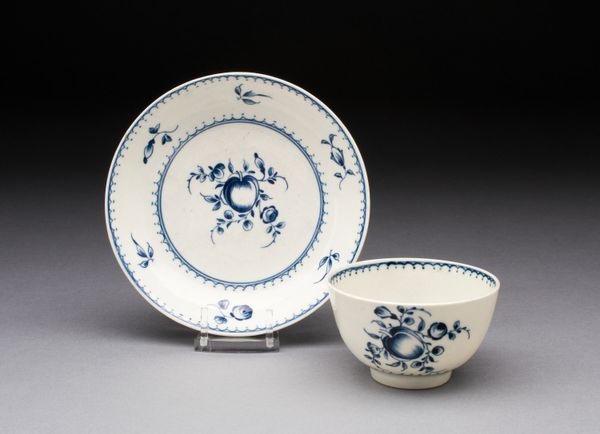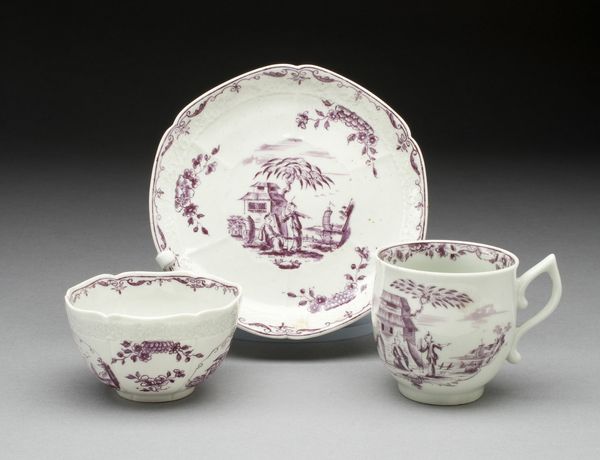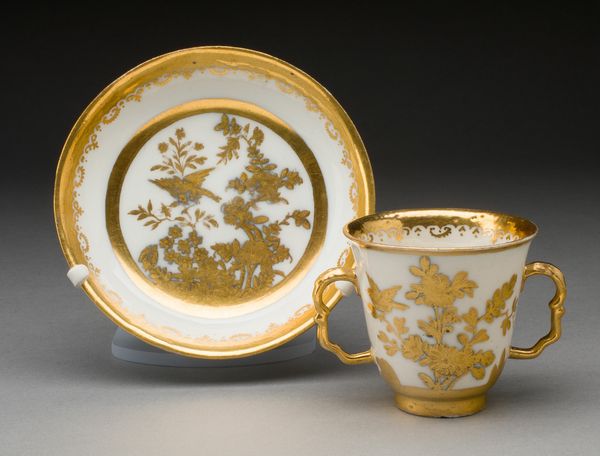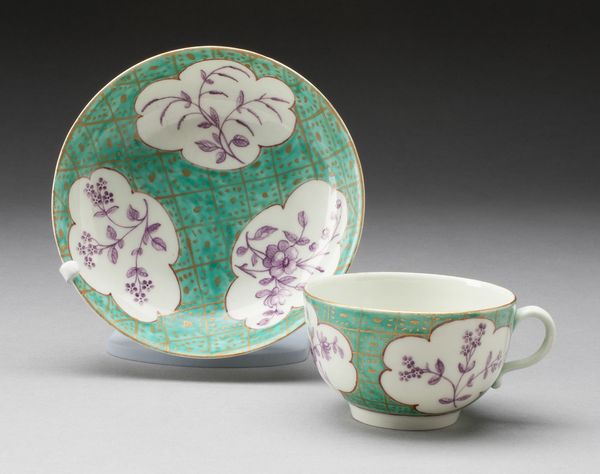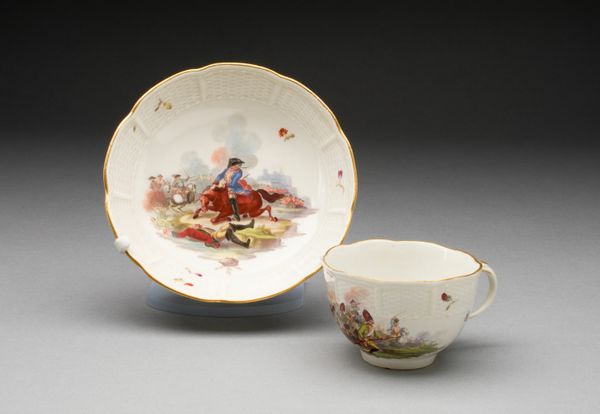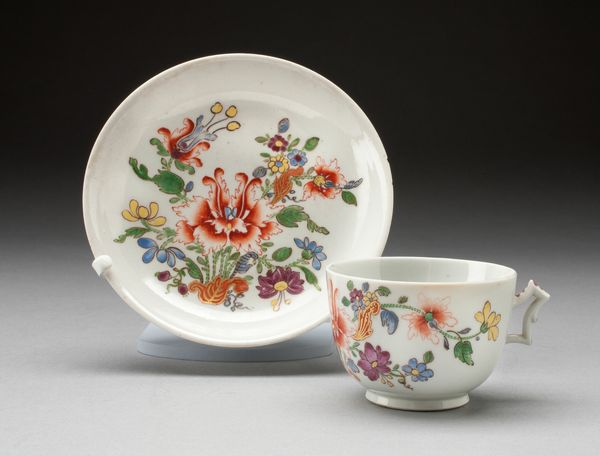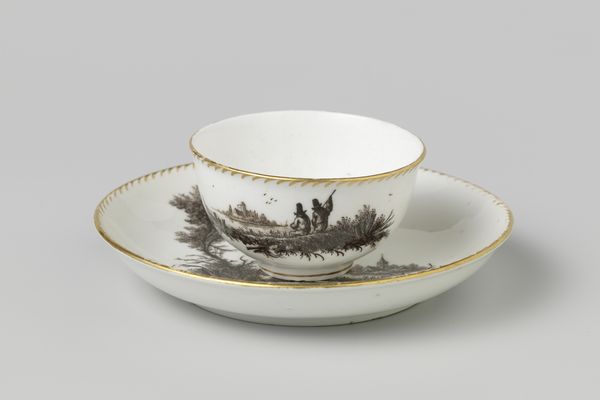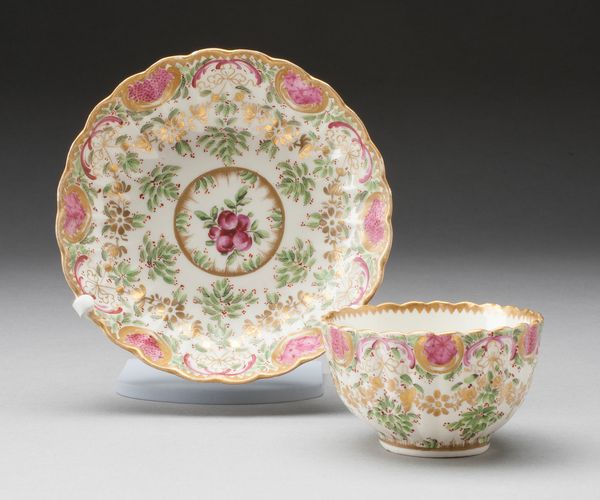
print, ceramic, porcelain
# print
#
asian-art
#
ceramic
#
jewelry design
#
porcelain
#
ceramic
#
decorative-art
Dimensions: Cup: H. 4.3 cm (1 11/16 in.); diam. 7.8 cm (3 1/16 in.); Saucer: diam. 12.9 cm (5 1/16 in.)
Copyright: Public Domain
This Tea Bowl and Saucer was made around 1725 by the Du Paquier Porcelain Manufactory. The hard-paste porcelain was skillfully thrown on a wheel, and the decorations were hand-painted. The delicate material speaks to the global fascination with Chinese porcelain, yet this set was actually made in Vienna. That’s because porcelain remained a closely guarded industrial secret for centuries. The founder, Claudius du Paquier, essentially stole the recipe through industrial espionage, hiring a defector from a German factory. The brown monochrome palette, heightened with gilding, suggests an attempt to mimic Asian lacquerware. The scenes themselves are what Europeans imagined Chinese life to be like, and thus are twice removed from reality. These wares were luxury goods, symbols of status and taste, and emblems of an aspirational lifestyle that the rising merchant class hoped to achieve. Looking closely at how things are made helps us to understand not just the objects themselves, but also the world that they inhabit.
Comments
No comments
Be the first to comment and join the conversation on the ultimate creative platform.

